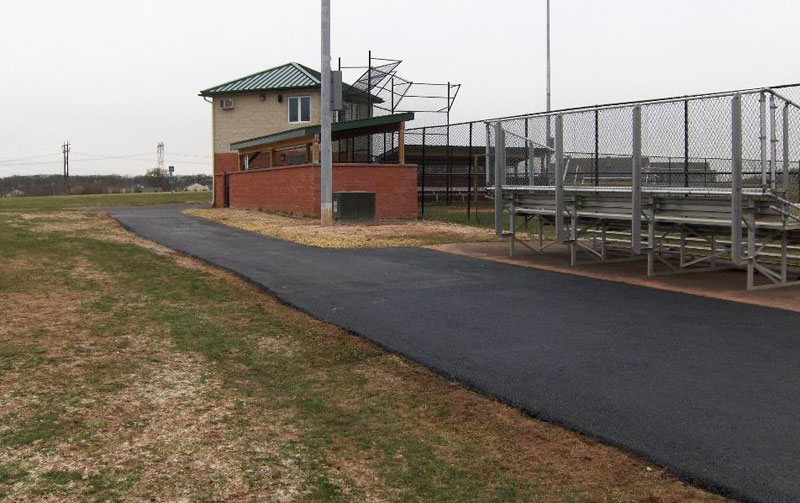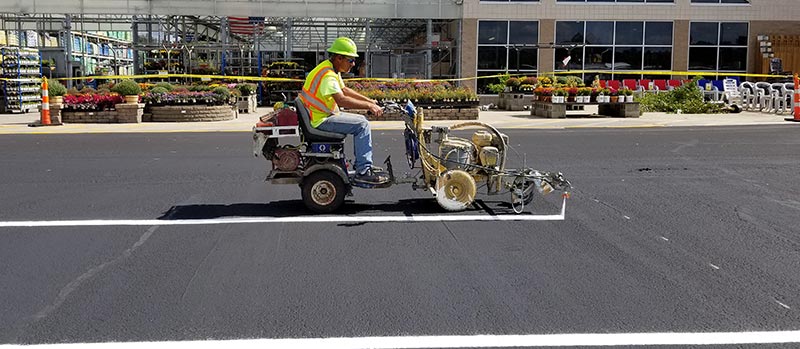7 Easy Facts About A1 Professional Asphalt & Sealing Llc Described
Table of ContentsThe Ultimate Guide To A1 Professional Asphalt & Sealing LlcGetting The A1 Professional Asphalt & Sealing Llc To WorkWhat Does A1 Professional Asphalt & Sealing Llc Do?The smart Trick of A1 Professional Asphalt & Sealing Llc That Nobody is Talking AboutThe 4-Minute Rule for A1 Professional Asphalt & Sealing Llc

The oil in an auto engine is not just oil. It contains a variety of ingredients to boost the lorry's efficiency. These consist of polymers, thickness modifiers, warmth stabilizers, extra lubricating substances, and wear ingredients. The REOB includes all the ingredients that were in the waste oil along with the wear steels from the engine (mainly iron and copper).
However, by making numerous blends making use of different REOB samples and different asphalt binders, the variations mostly can be balanced out. Numerous States supplied samples of known REOB make-up to TFHRC scientists, who analyzed the samples to compare the percent of added (understood) REOB to the discovered (examined) quantity. The analyses revealed an equivalent portion of added and found REOB.
More About A1 Professional Asphalt & Sealing Llc
They received an overwhelming action. The TFHRC scientists assessed 1,532 samples from 40 States, one Canadian province, and 2 Federal Lands Highway departments. They examined each sample twiceamounting to more than 3,000 evaluations. None of those States recognized that the asphalt they were buying had REOB. One State insisted its examples had no REOB.
Of the 1,532 examples examined, 12 percent consisted of REOB, and some consisted of substantially high degrees of it at 1020 percent. The highest degree was 34 percent in a sample from Texas, which TxDOT had actually used in a patching substance. This screening likewise exposed the presence of phosphoric acid in 11 percent of the examples, and 2 percent had ground tire rubber.
2 years earlier at TRB's yearly conference, the Federal researchers held an REOB workshop and provided the searchings for of their lab analyses to a standing room-only crowd. Although some agencies do not especially ban REOB, they do enforce physical tests that avert its useeffectively a ban. asphalt sealcoating in st louis. Others do not prohibit it by requirements, but have contracts with asphalt providers to stay clear of the use of REOB
Fascination About A1 Professional Asphalt & Sealing Llc
A handful do permit REOB, some within particular limits. Ohio and Texas restriction degrees to much less than 5 percent of the asphalt. To establish a dependable examination technique that all States can utilize, the TFHRC scientists established up a round-robin examination strategy. The individuals are 11 State freeway firms (Illinois, Massachusetts, Minnesota, Mississippi, Montana, North Carolina, Oklahoma, South Carolina, Texas, Vermont, and Wyoming), 2 independent screening laboratories, the Ministry of Transportation in Ontario, Queen's College in Ontario, and an Ontario paving service provider.
The participants are evaluating the samples independently making use of the guidelines supplied by the TFHRC scientists. The result will be a suggested AASHTO test approach that any type of State can adopt and make use of.
The sidewalk with REOB, which lies 0.6 mile (1 kilometer) from the sidewalk without REOB, has the same subgrade, web traffic density, and environment. Nevertheless, the segment of Highway655 with 5 to 10 percent REOB revealed significant fracturing. In this instance, the presence of REOB was the identified source of splitting at a reduced temperatures.
"In our experience in Canada, also little amounts of 23 percent can be an issue." A section of test sidewalk in Minnesota (MN1-4) located to have REOB also broke too soon. The sidewalk carried out well for the initial 3 to 4 years, but after that began to break. This sidewalk click here now is additionally subject to reduced temperatures.
The Facts About A1 Professional Asphalt & Sealing Llc Revealed
The tests were not considerable, yet they revealed that at levels of 6 percent or more, the tensile toughness of the asphalt went down substantially. At a degree of 3.5 percent REOB, the variant in the physical examination techniques was higher than the impact of REOB. It was tough for researchers to analyze whether REOB was present. https://www.evernote.com/shard/s452/sh/55e605bb-a7ab-087f-2bbb-4cc3e94c5474/UvHUCPgKcZ18HESRJSnkIId24flOmNta2DAPD8UMVaYOk5-3NsYjse3oCA.

One binder parameter taken into consideration is the difference in between the reduced temperature level crucial specification temperature for stiffness (S) in the flexing beam rheometer and the bending beam rheometer creep incline (m-value) noted as Tcritical. TC = TC (S) TC (m-value). Examination of this specification is still continuous. 2 independent research study groups, one from AASHTO and the other from the Asphalt Institute, concluded that even more research study is needed on using REOB in asphalt.
Formerly, all asphalt testing gauged design homes such as stiffness. These examinations do not reveal what materials had actually been included in the asphalt. One sample received during the TFHRC study had an extremely strange evaluation. The example had the complying with examination results: Superpave PG 64-28 with a high temperature level grade of 67.3 Tcritical on the flexing beam of light rheometer was 6.7 levels Celsius.

Rumored Buzz on A1 Professional Asphalt & Sealing Llc
These results demonstrate there are weaknesses in the standard design testing protocols that may be exploited. The producer may have an economic benefit and the item passes all the standard tests, but the item might not be beneficial to making certain lasting performance. To resolve this problem and the growth of new asphalt ingredients and extenders, TFHRC is starting a study program to utilize handheld spectroscopic tools, x-ray fluorescence spectroscopy, and Fourier change infrared spectroscopy to allow analyses to be performed in the area instead of needing to take samples back to the lab.